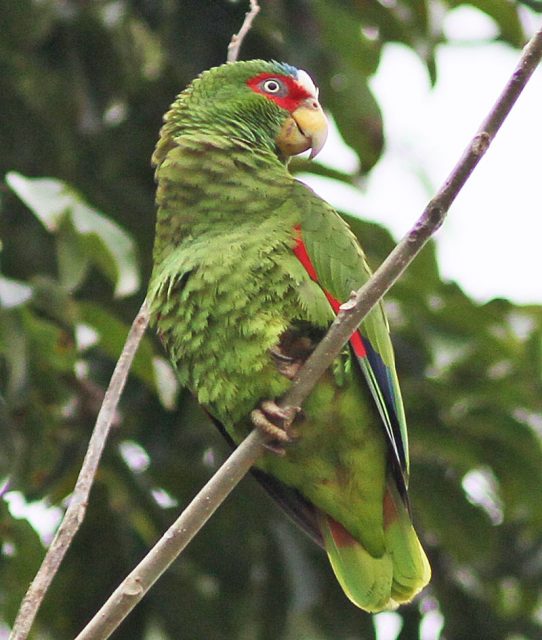Type the name of the breed you're looking for below
[wpdreams_ajaxsearchlite] Don't see the breed your're looking for? Click here and let us know!
White Fronted Amazon Parrot
| Origin | The White-fronted Amazon also known as the White-fronted parrot, or by the adopted slang term spectacled amazon parrot, is a Central American species of parrot. |
| Size | This species can grow up to 10 in(25 cm) |
| Lifespan | Can live up to 80 years |
| Noise | Moderate, talkative birds. |
| Characteristics | This species is named for the bright white patch of feathers on its forehead, although the amount of white varies from individual to individual. They have mostly green plumage with some blue colouring on their outspread wings. They have bright red colouring around their eyes (in some individuals almost like spectacles) and blue colouring behind the patch of white on their foreheads. |
| Abilities | Can talk or mimic human conversation. |
| Interaction/Time Requirements, Diet, Supplies Needed | A large cage is required even if the bird is going to spend lots of time out of its habitat with you. They require a warm habitat for the winter months. Do not allow your birds outdoors until all signs of frost are gone. Space is important and indoor cages should be as large as possible. Their diet in the wild consists of mainly fruits, wild figs, unripe nuts, flower and leaf buds, and some seeds. In captivity, they will eat most fruits including mangos, figs, guavas, bananas, melons, stone fruits, grapes, citrus fruits, pears, apples, pomegranate and papaya (pawpaw). You need to change food and water daily, and clean the cage at least once a week, replacing toys and broken climbing branches. Parrots do well in aviaries and cages. They don't like to be in crowded spaces and will sometimes be aggressive towards other birds if they don't have enough space. |
| Other Considerations | Parrots can also be hand reared, provided that they have a large cage and are taken out of their cage on a daily basis to prevent boredom, as it may result in the parrot pulling out its feathers to occupy itself. |



